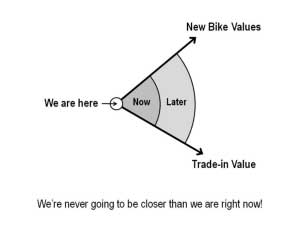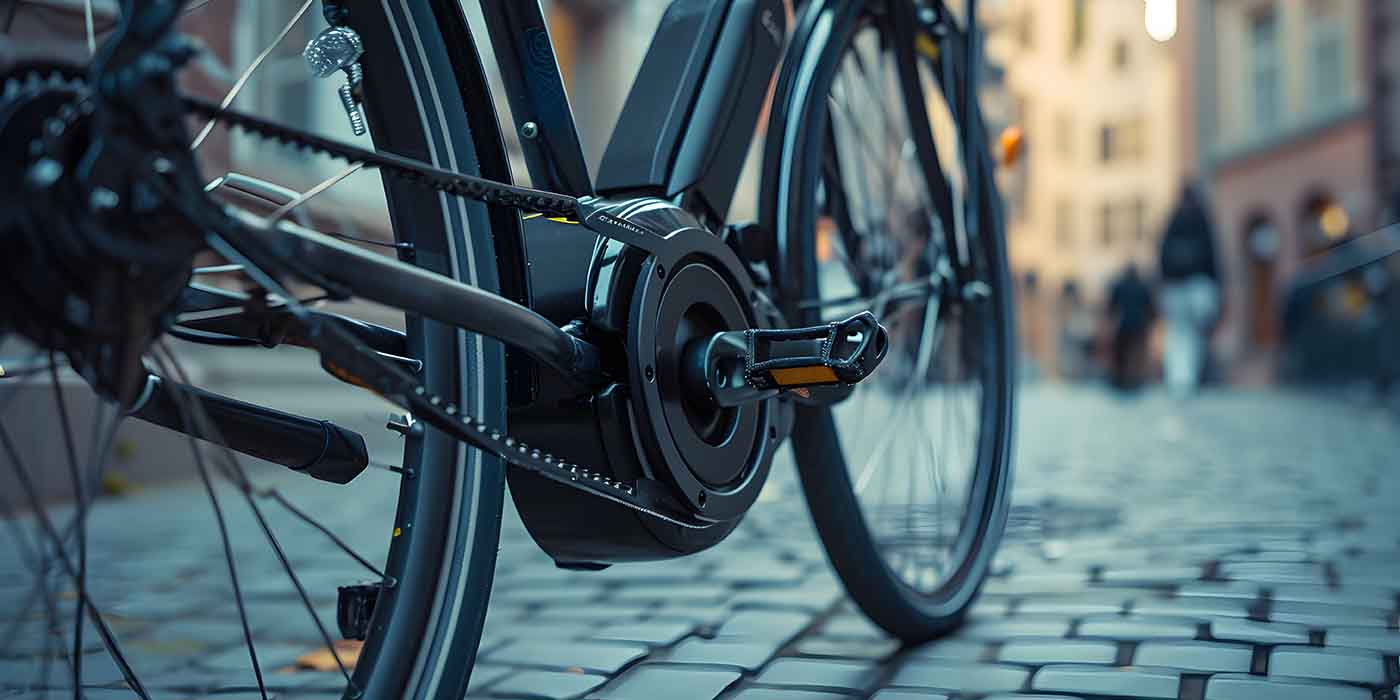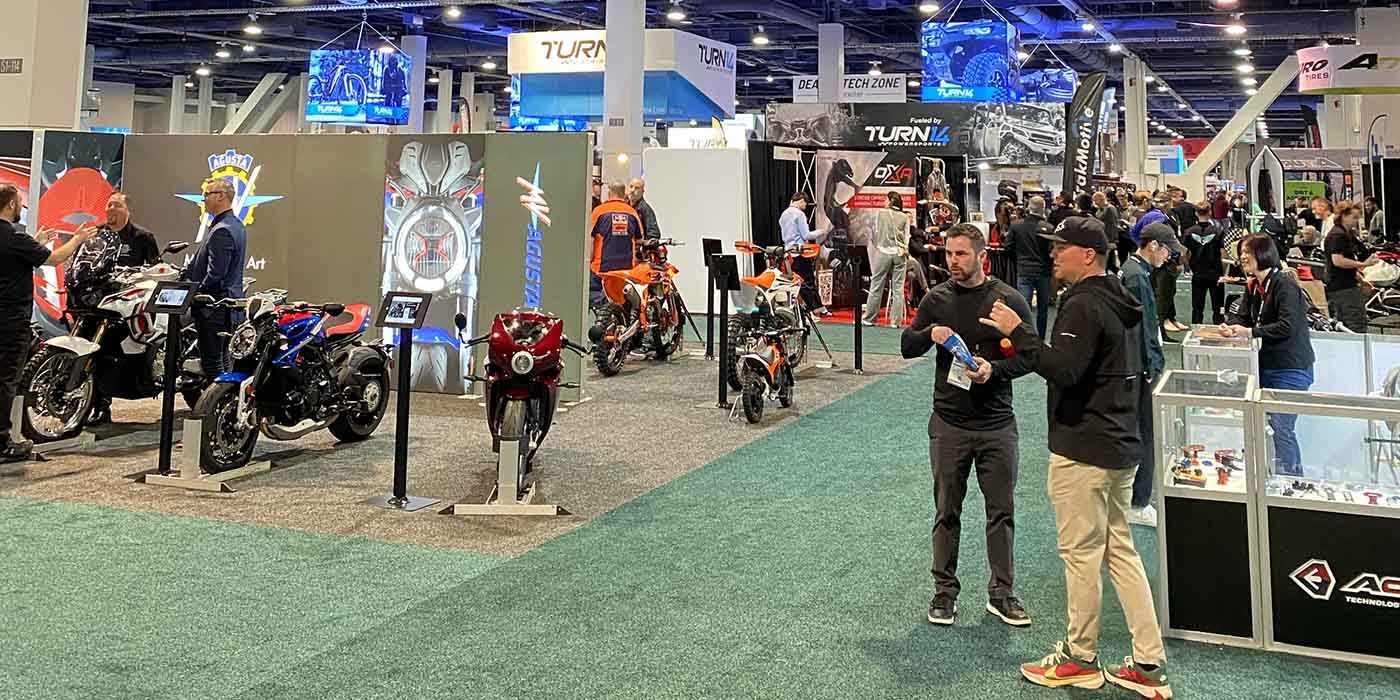 In last month’s issue of MPN, we discussed some ways to negotiate trade-in values of bikes with customers. For the most part, if you stick to your sales experience, knowledge of your store and knowledge about the vehicle, you should be in good shape to offer the customer the best deal without losing money. In addition, it’s a good idea to start with a low number and then add money to sweeten the deal, instead of chopping money off a large number. Here are some other ways to negotiate a deal without getting punched in the face.
In last month’s issue of MPN, we discussed some ways to negotiate trade-in values of bikes with customers. For the most part, if you stick to your sales experience, knowledge of your store and knowledge about the vehicle, you should be in good shape to offer the customer the best deal without losing money. In addition, it’s a good idea to start with a low number and then add money to sweeten the deal, instead of chopping money off a large number. Here are some other ways to negotiate a deal without getting punched in the face.
Customizing to the Extreme
We’ve all seen extremely customized bikes. These conversations take extra care and consideration. People align themselves so closely with their motorcycle that to disparage their bike would be to disparage them. It’s time to sit down and explain to them that even though that paint job and those bolt-ons are awesome, it’s usually easier and quicker to sell a bone-stock bike than one that has lots of personality.
It’s not that his bike isn’t awesome, it is — to him. It’s just that it’s going to take some additional time on the floor and maybe even some reconditioning to find the right buyer.
As you may know, we continuously harp on the expert use of language. Here are some words and phrases that can help with these conversations:
- Your motorcycle certainly has personality.
- The bike is uniquely you.
- It certainly has character.
- The motorcycle is distinctive.
- Your bike has individuality.
Here are some additional phrases you can use:
- Regretfully, in an open market you have to appeal to the greatest number of potential buyers.
- We will reluctantly have to return this bike closer to stock to be able to attract general interest.
- The dilemma is how to translate your personality to a new buyer.
These approaches will go much farther than, “What in heaven’s name were you thinking when you did this to your motorcycle!”
Retail to Retail, Wholesale to Wholesale
You run a great store. You offer superb service and a great depth of knowledge. You should never feel guilty about making a profit. Your customer doesn’t work for free and neither should you. Your customer will usually tell you what’s important in the transaction without you having to ask. If you get them close to what they’re asking for, it only seems fair that they do the same by paying what you would like for your bike. Isn’t it great when the customer wants you to pay retail for his trade and wants to pay wholesale for his new bike? If they want a deal on your bike, you deserve a deal on their bike. This reality has to be explained to the customer otherwise, you’re not on the path to a long and storied tenure in the motorcycle business.
Picker’s Parallel
One of the other ways you can set expectations is to draw a parallel between trade values and reality TV. Many people have seen either American Pickers or Pawn Stars. This is helpful in that it educates consumers on the position of the buyer, i.e. you. You can simply ask your customers if they’ve ever seen one of these shows; many will readily admit that they have. “Then you understand that the guys on Pickers or Pawn Stars have to be able to buy items at a price that allows them to earn a reasonable profit. That is exactly our situation as well.”
The Difference is the Difference
Take the trade value off the table. Cash buyers with a free and clear title to the trade are usually more interested in the size of the check they’ll have to write than they are about the actual trade-in value. Why start a discussion if it isn’t that crucial to the transaction at hand? Pencil the offer back: “Your bike + $325 per month” or “your bike + $7,000.”
It simplifies the process and allows you to negotiate the only number that really matters: the amount out of pocket required to purchase a bike today.
You have to ask enough questions and listen to your customer to know which approach will have the best results. If they are fixated on getting a certain number for their trade, be prepared to get incredibly granular and detailed on how you arrived at the figure you did. If it’s all about getting a great deal on your bike, focus your efforts there.
Safety and Legal Requirements and Reconditioning Required
You have a store, licenses and a reputation to protect. You also have an obligation, both legally and ethically, to only sell safe and sound vehicles. So, start with a figure. Subtract for the changes you’ll have to make to ensure legal and safety compliance and then build them back up with some of the good things you can find on their bike. Keep looking. You’ll find a few things to end with on a positive note.
There is no way to get around the things you will have to do to make the motorcycle safe and legal. If your customers were selling the bike themselves, then they could make that decision. You have an obligation to your customers and to your dealership. If you explain the cost of adding a horn or having to replace the handlebars to meet the legal requirements, you will have given a well-reasoned and thought-out justification for the figure you have provided.
Visual Depiction
A great way to create a sense of urgency is to instantiate the situation. Here’s how you can make your point with trade values:
- Draw a circle on your pad and say to the customer, “OK, here’s where we are right now.”
- Ask the question, “What typically happens to the prices of new bikes in the future? Well, they go up.” Draw a “new bike” line that slants up.
- Then ask, “What typically happens to the value of used bikes over time? They often go down.” Draw a “used bike” line that slants down.
- Then make the statement, “The difference between the price of the new bike you want and your trade is here.” Draw the “now” line.
- “If we wait until sometime in the future, it will be here.” Draw the “later” line.
- And end with, “So, as you can see, we’re never going to be closer on what you’re looking for in terms of new bike price and trade value. What do you think?”
Tap Out: Enough Already!
Trade valuation can be tough, but it doesn’t have to be. Think about:
- Building a trade value from the bottom-up and not the other way around.
- Set expectations early in your customer conversations.
- Understand your market, get involved.
- Sales history and time on the floor.
- The words you use and the phrases you choose.
- Use process visuals to paint a picture.
Consider it a relationship building opportunity rather than an invitation to join the bike fight club. Your customers will be happier and your trade values will be fairer for both parties.
An award-winning author, top-rated trainer and founder of Peak Dealership Performance, Mark Rodgers holds a master’s degree in adult education and the National Speakers Association Certified Speaking Professional designation — only 500 people in the world have this coveted recognition. Contact [email protected] to improve your performance.













